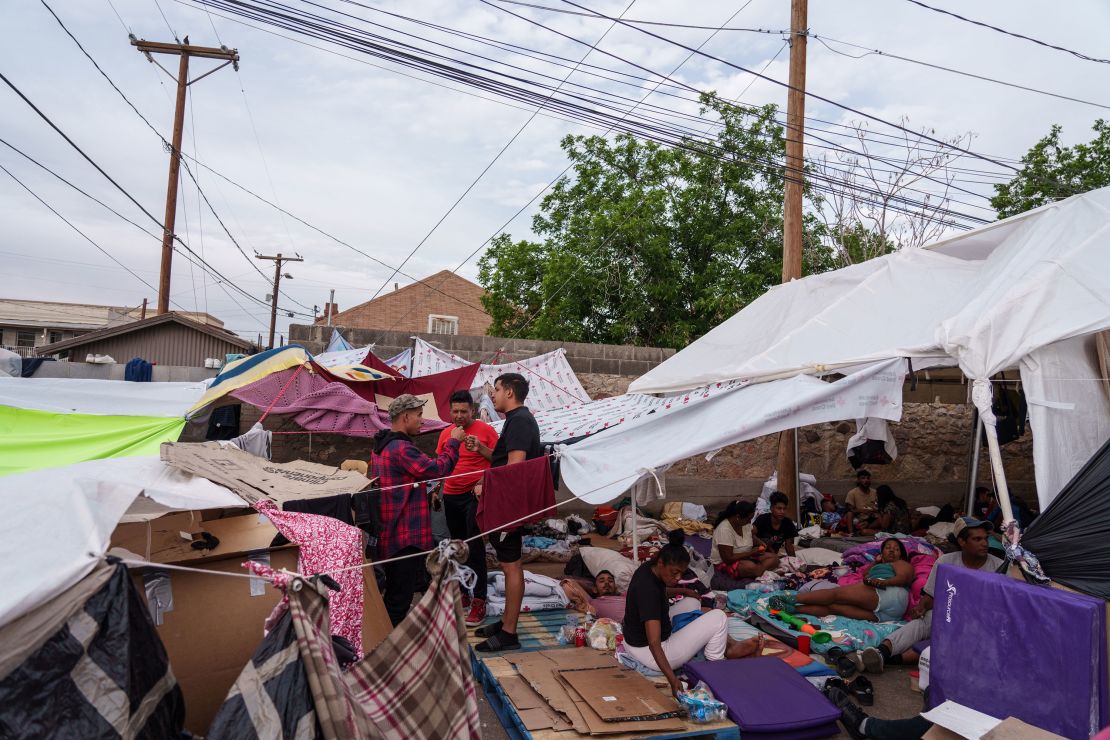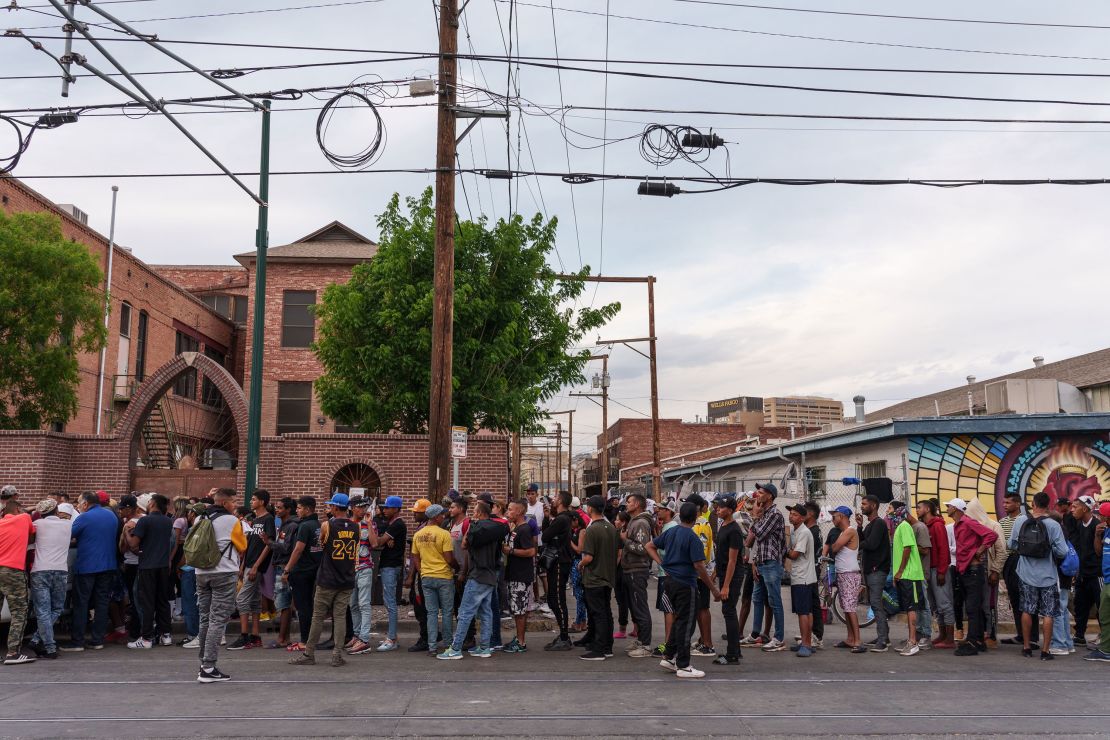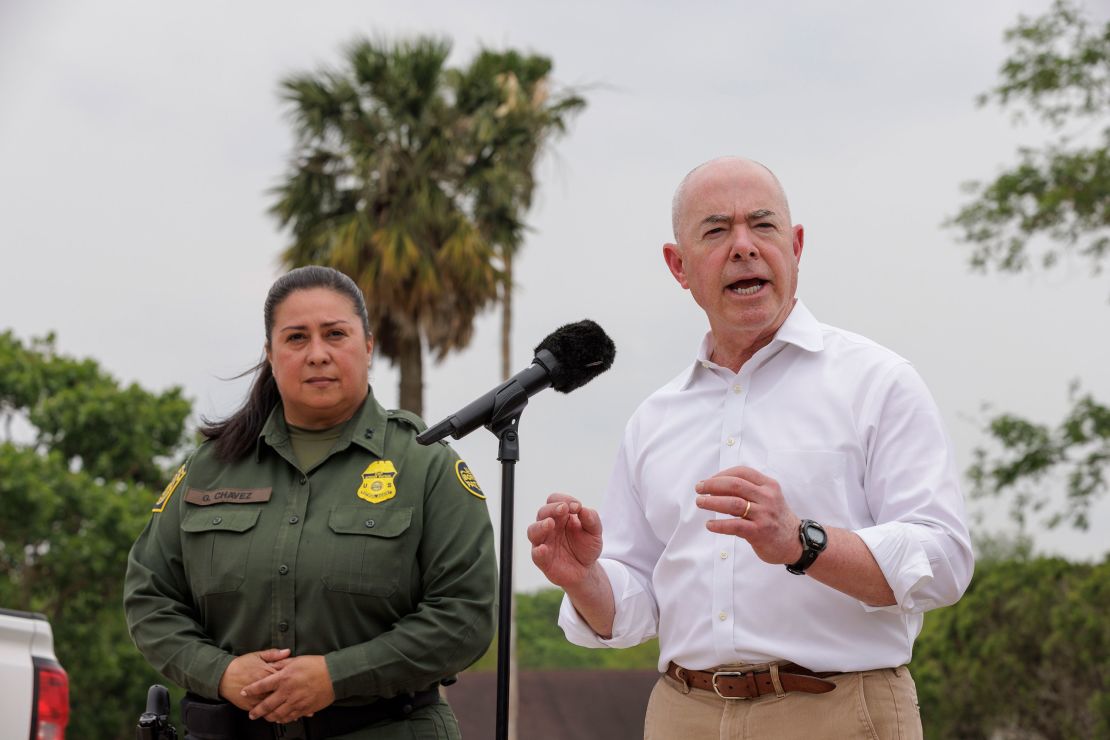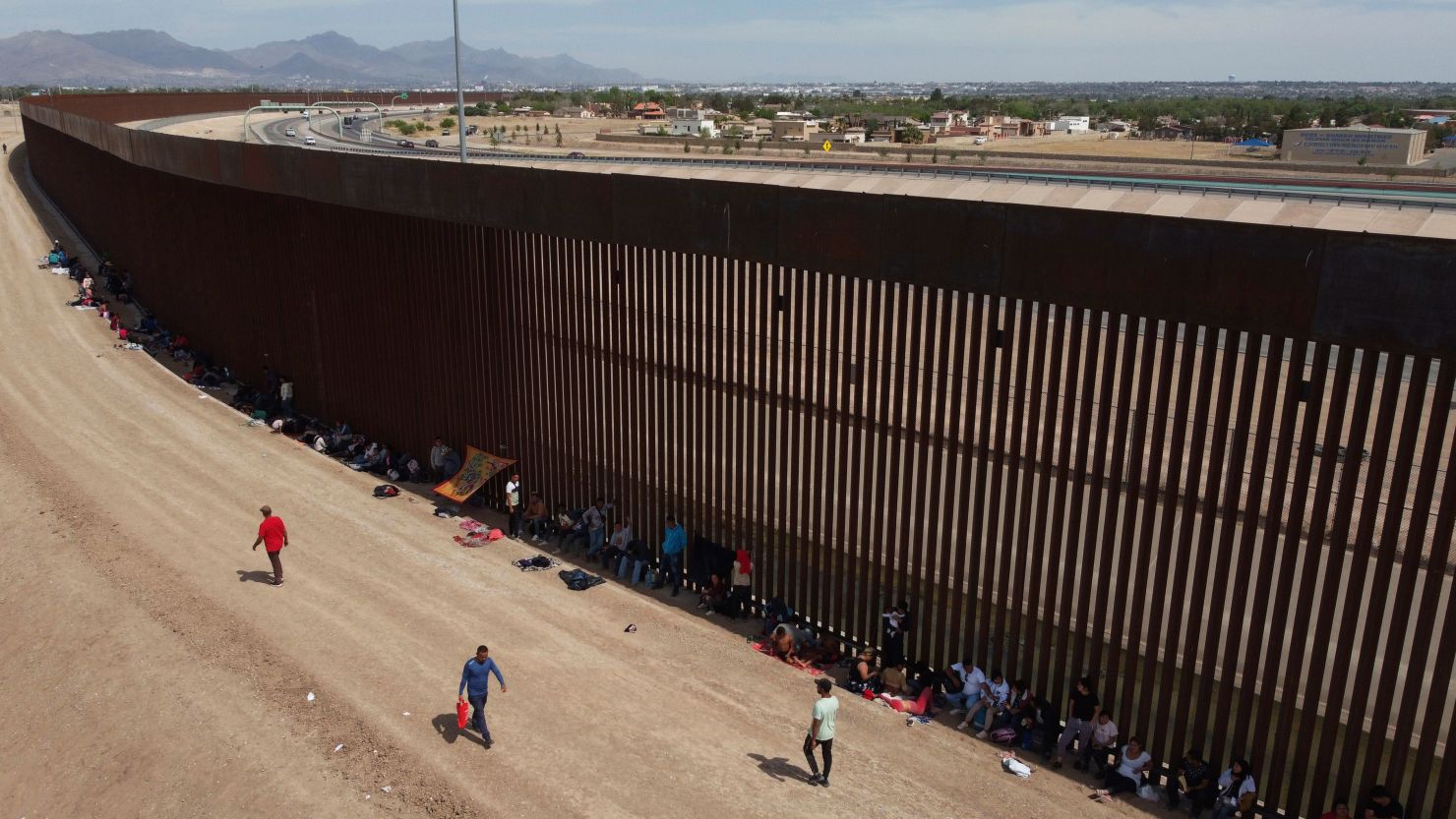The United States is bracing for the expiration of a pandemic-era border restriction this week, with officials fearing it will spur a surge of migrants and exacerbate an already challenging humanitarian crisis at the southern border.
“No matter how much we are prepared, I don’t think we are going to be prepared enough,” John Martin, deputy director of the Opportunity Center for the Homeless in El Paso, Texas, told CNN on Sunday, days before the lifting of Title 42, a Trump-era policy that allowed the government to quickly turn away certain migrants at the border, originally with the aim of stopping the spread of Covid-19.
“I wanted to emphasize more so than anything else at this point – this is a national issue,” Martin said. “We in El Paso, along with many other communities along the southern border, just happened to be at the front doorstep.”
While first implemented under the Trump administration as a response to the pandemic, Title 42 has been kept in place by the courts and used by the Biden administration to deal with migrants at the border.

That will change Thursday, when the public health emergency – and Title 42 along with it – is set to lapse amid unprecedented mass migration in the Western Hemisphere.
“This is an international issue,” Father Rafael Garcia, a priest who runs a shelter at an El Paso church whose surrounding streets have become a camp for hundreds of migrants. “And we’re just like the neck of the bottle, or funnel.”
US Customs and Border Protection has already seen an uptick in migrants crossing the border with Mexico, with more than 8,000 daily encounters, according to a Homeland Security official – a number that officials predict could reach 10,000 once Title 42 is lifted. There are around 25,000 migrants in custody, the official said, straining processing facilities that are already over capacity.
“I think that there is no question that this is going to be extremely challenging,” Department of Homeland Security Secretary Alejandro Mayorkas said Friday in Brownsville, Texas, during a visit to the Rio Grande Valley. “I do not want to understate the severity of the challenge that we expect to encounter.”
But federal officials have long been preparing for the end of Title 42, Mayorkas stressed, saying the government was ready.
“We have a plan.”
Still, in a news conference Monday morning, Texas Gov. Greg Abbott likened the expiration of Title 42 as the laying out of a welcome mat to migrants across the world, signaling to them America’s borders are wide open.
“It will lead to an incredible amount of people coming across the border illegally,” Abbott said, adding the administration’s policies would “cause a catastrophic disaster.”
Migrant arrivals bringing border cities to the brink, advocates say
Some communities are already dealing with an influx of migrants.
Brownsville began seeing a spike about a week and a half ago, according to Sergio Cordova, a founder of the non-profit organization Team Brownsville.
The organization has been receiving about 1,000 migrants a day at its center, Cordova said. And while many quickly move on to their next destinations, dozens have slept on the streets over the last week.
Brownsville is also where a driver plowed into a group of people Sunday outside a shelter housing migrants, killing eight, including several immigrants. It was unclear whether the crash was intentional.
El Paso, which declared a state of emergency ahead of Title 42’s expiration, has about 2,300 migrants living on the streets around two shelters downtown, officials said last Thursday, describing the population as one of mixed legal status, with some who turned themselves in to US immigration authorities and others who crossed the border illegally.
That’s in addition to an estimated 330 migrants staying inside the shelters.
A survey of 258 migrants by one shelter determined about 41% were processed by US immigration authorities, while 59% had illegally entered the country, according to Martin, who told CNN there were some 950 people camped outside in his center’s alley.
“We’re still able to feed them but in all honesty, that’s not sustainable operation at this point,” he said, adding the center has moved to serving two meals instead of three, something only possible with the American Red Cross and a local food bank, El Pasoans Fighting Hunger.
More could be on the way: El Paso Mayor Oscar Leeser estimated up to 15,000 migrants are in or traveling to Ciudad Juarez, on Mexico’s side of the border, waiting for Title 42 to lift.

Tijuana, across the border from nearby San Diego, has about 6,000 migrants waiting in shelters and homes across the city, according to Enrique Lucero, the city’s director of migrant affairs.
A growing number of migrants are jumping the border fence and swimming across the border, Lucero said. But the shelters’ numbers don’t drop because more migrants arrive each day, and some are of nationalities he’s never seen there before, hailing from places like Kazakhstan, Mauritania, Uzbekistan and Kyrgyzstan.
“We are at the brink of a humanitarian crisis,” Lucero said, adding shelters are already beyond capacity.
New York City mulls solutions
The impact of Title 42’s expiration could be felt far beyond the border – particularly in cities that have in recent months become the targets for Republican governors and officials in Southern states sending buses of migrants elsewhere.
That’s become a full-blown crisis for New York City. About 58,300 asylum seekers have arrived and been processed through the city’s shelter system over nearly a year, with more than 36,100 currently in the city’s care as of the end of April, according to City Hall.
Mayor Eric Adams has been vocal in his calls for more aid, saying the migrant arrivals in his city and others in the Northeast should be handled by the federal government. The financial burden, he said recently, is also taking a toll on the city, which on Friday was awarded $30.5 million from the Federal Emergency Management Agency in humanitarian aid – a fraction of the $350 million the city asked for.
On Friday, the mayor announced the city would send willing migrants to neighboring New York communities, providing up to four months of shelter to single men seeking asylum already in the city’s care.
That plan was not well-received by officials from Rockland County, which would host some of those migrants. The county, about 25 miles north of New York’s northern boundary, declared a state of emergency Saturday saying it “is not capable of receiving and sustaining” the migrants New York wants to send there.
The state of emergency prohibits other municipalities from sending migrants, Rockland County Executive Ed Day said in a statement.
On Monday, the executive of neighboring Orange County also declared a state of emergency, ordering that asylum seekers and migrants would not be allowed to stay in hotels, motels or other short-term rental facilities in the county.
An internal briefing memo obtained by CNN lists New York City’s other possible “solutions” for a surge, including tents in Central Park, a retrofitted airplane hangar at John F. Kennedy International Airport and temporary tiny homes, which would be built. The memo notes the city is anticipating 800 migrants will arrive in the city each day after Title 42 lifts.
Three officials in Adams’ administration confirmed the authenticity of the planning document to CNN.
Fabien Levy, Adams’ spokesperson, declined to comment on the specific proposals outlined in the document but told CNN, “While we do not discuss internal deliberations, we’ve been clear that the burden of caring for asylum seekers shouldn’t fall on any one city alone.”
Government ‘surging resources,’ DHS secretary says
The Biden administration has worked to discourage migrants from simply crossing the border, stressing the legal pathways for their entry to the US.
That includes regional processing centers the administration said last month it was setting up in Colombia and Guatemala, which are frequently transited by migrants on their way to the US-Mexico border. The government has pledged to increase the number of refugees allowed into the US and is pushing applicants to use those regional centers.
“The idea is, of course, that people will not continue their journey over land,” a senior administration official recently told CNN. “The whole idea of regional processing centers is to give people a lawful, safe, regular way to enter the United States.”

When Title 42 lifts, US officials will return to using the decades-old Title 8, under which migrants will face more severe consequences for crossing the border unlawfully, such as being barred from entering the US for at least five years. Asylum seekers who cross the border without first applying for asylum will be removed under that Title 8 authority.
Under this approach, if they attempt to cross again, they can face criminal prosecution, and the DHS promised these migrants will be removed from the US quickly and efficiently.
“Individuals who access the lawful pathways that we deliver for them will be able to come to the United States in a safe and orderly way,” Mayorkas said during a news conference in Brownsville, urging migrants not to listen to smugglers who he said were providing them misinformation.
Those who arrive “irregularly,” he said, “will be presumed, absence some limited exceptions, to be ineligible for asylum.”
In the meantime, the government is “surging resources” to “effect a greater number of removals every week,” Mayorkas said, also touting Border Patrol processing facilities like the one he visited in Brownsville, which he said had been set up within 72 hours.
The Biden administration has also deployed to the border 1,500 active-duty troops, who will join approximately 2,500 National Guard members, for 90 days, sources familiar with the planning told CNN. They will serve not in a law enforcement capacity, the sources said, but in administrative roles to free up DHS resources so US Customs and Border Protection can operate more freely in the field.
“Fundamentally we are working within a broken immigration system that for decades has been in dire need of reform,” Mayorkas said.
Abbott on Monday said his state was deploying a new National Guard unit to “hot spots along the border to intercept, to repel and to turn back migrants who are trying to enter Texas illegally.” Additionally, Abbott hoped the Legislature would pass laws later this month to give Teas more “tools” to secure the border, including making it a felony to illegally enter the state from Mexico.
CNN’s Rosa Flores, Priscilla Alvarez, Gloria Pazmino, Samantha Beech, Natasha Bertrand and Haley Britzky contributed to this report.





